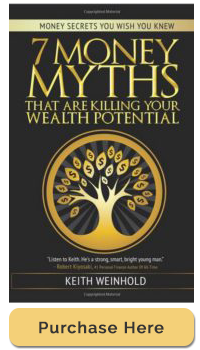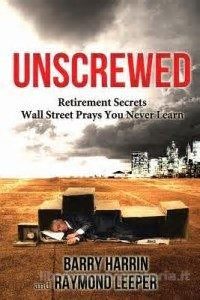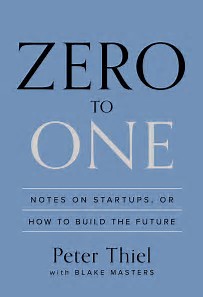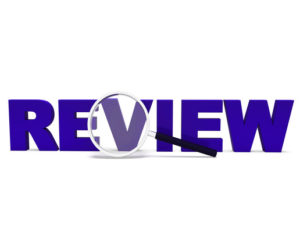
The following is one of Keith’s more insightful sayings, which he includes in his book, 7 Money Myths,
“It makes no sense. People spend tons of time learning about how work works. They spend zero time learning about how money works. Yet money is the main reason that they go to work.”
The book is an excellent write-up of the prevailing way of thinking about work and money in the modern world. Keith starts the book off by presenting the typical scenario of a student going to school to earn a generic degree, so they can get a job they don’t like, and then work for a decade to pay off the loans they used to buy the degree. They live their life believing they’ll never get “ahead” because they didn’t have the intelligence or luck to hit it really big.
Keith says, “Most have been so indoctrinated with this ideology that you think ‘this is just the way it is‘ and ‘there is no alternative.”’ Most people think they have to be born rich to be rich, or that it ‘takes money to make money.’”
The alternative to this standard way of thinking is what Keith calls the Abundance Mindset. This mindset requires that your mind pass through four filters. First you must Realize, then you must Decide, then Educate, and finally Act. According to Keith, this abundant mindset will transform your life.
“You don’t need to be anywhere near the smartest, hardest-working, or most articulate person to obtain financial freedom. You need to be informed, action-oriented, and sometimes a little bold.”
Keith encourages the reader to push beyond their fear. He says, “Fear and doubt destroy more dreams than failure ever does. Most people don’t live their dreams; they live their fears.”
The meat of the book is all about the money myths that Keith has identified. He identifies the myths, and showcases why each one is false. If you’re new to this sort of thinking you may find yourself reading these chapter titles in a bit of disbelief. These myths seem to be accepted as truth by the majority of people in the world, so it’s not surprising that you would be shocked. But Keith dismantles each of these one by one, and does so in a manner that is fairly compelling. Here are the myths he identified.
Myth #1: Live Below Your Means. – Truth: Expand your means
Keith opens up with the myth that is proposed by financial gurus of the world – spend less money in order to live your dreams! While this can be true for people who are addicted to spending money using expensive credit cards – the myth that Keith is talking about is the myth that cutting coupons and eliminating Starbucks will create wealth.
Keith says, “One can never clip enough coupons, buy enough of the cheaper paper towels, or seek out the less expensive gas station often enough to create lasting wealth. That won’t work. In fact, it prevents wealth creation because you’re consuming your limited time, actions, resources, and mental bandwidth on nonsensical trivialities. In life, think less about reduction. Think more about production.”
In reality I don’t think most gurus, ( such as Dave Ramsey), actually state that you can “create lasting wealth” by reducing your consumption. They typically are suggesting that you eliminate bad debt (credit card debt). But I think that the principle that Keith mentions here is valid – thinking about production is way more profitable in the long run.
Myth #2: Get Your Money To Work For You. – Truth: Get other people’s money to work for you
This myth is the one that suggests a 401k earning 10% interest a year is a great investment. Keith shows that it may not lose money in the long run, you are likely to have some sort of retirement when you turn 70 or so. But it will never make you wealthy, period.
Instead, Keith suggests that you buy cash flowing real estate assets using other people’s money (OPM) and use the income from those assets to create wealth. He says, “you can employ OPM three ways, simultaneously! You employ the bank’s money to produce great leveraged rates of return. You employ the tenant’s money for your monthly income. You employ the government’s money for generous tax incentives.”
Myth #3: Be Debt-Free – Truth: Be Financially-Free
This is such a pervasive myth and one that the financial gurus love to propose. Not all debt is created equal, and Keith showcases that in this chapter. He encourages the reader to be financially free. He says,
“Financially-free means that you can do whatever you want to do, whenever you want to do it, because you have passive income.”
One example mentioned in the book is that of buying cash flowing real estate. Keith explores what happens with the money you would spend on the real estate. “With each dollar of (smart) debt that you take on for real estate, at the same time: You create passive rental income. That’s money you don’t have to work for. You own an asset worth at least $1.20 to $1.25 for each dollar of your debt. Your tenants make the monthly debt payment for you. Each day, tenants and inflation erode your mortgage principal balance. You create another tax benefit for yourself. You create value for society with good housing (operate with integrity).”
The lesson is simple. Why pay all-cash for the real estate when you would limit the amount of people you could serve by doing so.
Keep in mind that Keith is not suggesting zero money down and crazy financial leverage. He is talking about sound purchasing principles where you can weather a downturn in the market if it happens.
“Just like you wouldn’t keep one million dollars in the bank because inflation would erode its purchasing power, I do want to keep one million dollars in debt because inflation erodes that debt burden the same way. That’s inflation-hedging.”
Myth #4: Compound Interest Can Make You Wealthy – Truth: Leverage Can Make You Wealthy
This myth is one that people tend to buy without thinking much about it. They’ve heard the quote that compound interest is the eighth wonder of the world and they’ve bought it hook, line, and sinker.
But reality suggests that financial leverage is the actual eighth wonder of the world.
Think about this, “many economists believe the real rate of inflation is 5% or more. Subtract 5% from your 10% stock return and your rate of return in real dollars is already down to 5%, and we haven’t even factored in fees, taxes, and emotion yet.
“Now compare this stock market portfolio performance, to a rather conservative real estate investment. “You purchase a $100,000 property with a $20,000 down payment and an $80,000 loan. At real estate’s national historic appreciation rate of 6%, your property appreciates to $106,000 after one year. Not too thrilling, right? Not until you realize that your Return On Investment formula is your gain ($6K) divided by the amount you have invested ($20K). That’s a 30% Return On Investment to you!”
If you are going to spend your time and money looking into ways to make money, wouldn’t you rather go for the method that seems to have the greatest potential?
Keith then demonstrates five different ways in which you will be paid when you invest in real estate.
- Appreciation. Your property appreciates from $100,000 to $106,000, commensurate with real estate’s historic appreciation rate of 6%.
- Cash Flow. Your $1,000 of monthly rental income minus all the monthly expenses (Assume $430 mortgage, $100 property tax, $100 insurance, $100 property management, $70 repairs, $50 vacancy) leaves you with $150 of monthly residual income.
- Loan Paydown. Unlike your own home where you work to pay down the principal yourself, your tenant pays the $98 monthly principal portion of your $80,000 loan on this property!
- Tax Benefit. We’re talking about both the mortgage interest deduction and something called “depreciation” that you can typically use as a tax write-off against your income.
- Inflation-Hedging. This fifth way is one that even some advanced investors fail to consider. Just like inflation erodes the value of your lump of savings, it erodes the weight of your mortgage debt.
Keith outlines that the total return on investment for year one could be as high as 51%. And even if something goes wrong and you have to pay a chunk of money here or there for repairs or vacancies. The reality is that this type of return on investment is much more likely to exceed the simple stock portfolio by a great margin.
Myth #5: Millionaires Have Got It Made. – Truth: Millionaires are not financially wealthy
Keith mentions that a million dollars just isn’t worth as much as it used to be. And honestly this isn’t really a huge surprise to anyone.
Keith suggests that, “Your wealth is measured by the period of time that your passive income stream will last at your chosen lifestyle, without you having to work.”
In other words, net worth is not a true measure of wealth. Rather, cash flow is the true measure of wealth. This is particularly when you incorporate the velocity of money and keep your money moving, rather than let is sit idle.
Myth #6: Home Equity Is A Smart, Safe, and Sound Investment. – Truth: The rate of return from home equity is always zero. It is also unsafe and illiquid
This myth isn’t mentioned much in the mainstream, most likely since it is counter to what the banks would have you believe. Here is the truth:
Home Equity’s Rate Of Return Is Always Zero
It may take a minute to wrap your head around this, but essentially Keith is saying that the value of the real estate has nothing to do with the home equity.
In other words, two identical homes sitting side by side in a community will go up or down in value at the same rate regardless of the amount of money owed on the mortgage. House A could have 50% of the mortgage paid off, and the other could have 0% down. But regardless of how much home equity, the value of the home will go up or down based on the market conditions alone, not the equity.
But Keith presents a key point here,
“…the more equity that you leave exposed in a home, the more that you stand to lose.”
“Lesson? Consider keeping small equity positions in your properties. Equity is unsafe, illiquid, and its rate of return is always zero. Holding large amounts of home equity can be risky.”
If you have listened to Keith’s podcast you know that Keith often asks the question, if you are a bank, which house will you foreclose on first, the house with no equity or the one with equity? Of course it will be the house with equity. That is why home equity may actually be a liability, rather than an asset.
Myth #7: Retirement Plans Are Wise Investment Vehicles. – Truth: Retirement plans reduce your salary and ravage your life
This final myth revolves around the 401(k) pros and cons and all the other plans of the same ilk. Keith says, “Did you know that when 401(k)s sprouted in the early 1980s, they were ominously dubbed “Salary Reduction Plans”? It was soon realized that they had to scrap that name to foster employee participation.
In this chapter Keith shows that the 401(k) costs you money every pay period while you are young, and doesn’t pay until you are much, much older. Meanwhile, the cash-flowing asset pays you every month you own it, regardless of your age. So which do you want to own?
In addition, a cash-flowing asset is likely to have tax benefits that are far greater than the 401(k) or any other tax-deferred contribution plans.
For those that might be worried about capital gains tax on the property, Keith says, “I’ll legally pay zero capital gains tax forever through a tax incentive that the government gives real estate investors called a “1031 Exchange”. Even my heirs won’t have a tax liability due on the properties.”
This chapter has much more on the topic of the 401(k), but ultimately it comes down to the 401(k) being a risky investment that has very little chance of outpacing inflation much more than 5%. And at that rate you’re not going to have a great retirement, and you’ll have to wait decades to access it without penalty.
Conclusion: Your Answer To Financial Freedom
Keith concludes his book with a call to real estate investing. He says, “The answer and solution to all seven money myths is: real estate investing! But it’s done in a strategic way so that you’re the profiteer, without sinking a lot of time into the endeavor (and certainly not landlording or flipping – those activities are jobs, not investments).”
He points out that there are significant risks, but that the educated investor can overcome those risks. He lists what he believes matters most, and he puts them in order of importance so you can move with confidence.
Keith says, “When I “came of age” and it was “time” to buy my first single-family home, I didn’t buy one. Instead, I bought a four-plex building, living in one unit and renting out the other three. I didn’t even know what terms like “cash flow” and “equity” meant yet! From there, I took my time to learn the building’s financials and compare it to stocks, mutual funds, precious metals, bonds, foreign currency trading, and other investments.”
“Formal education will make you a living. Self-education will make you a fortune.” -Jim Rohn
7 Money Myths That Are Killing Your Wealth Potential has quite a lot to offer the reader that is looking for an alternative to the traditional retirement plans that are so common in the workforce today.
At I&E we believe whole-heartedly that you should invest your money wisely without blindly following the herd. This review is just a brief overview of the topics discussed in the book. If you found this topic interesting, I would recommend picking up the book for yourself and reading it.
The worst thing you could do is sit on the information and do nothing. Educate yourself and then act upon it – you’ll be glad you did.





